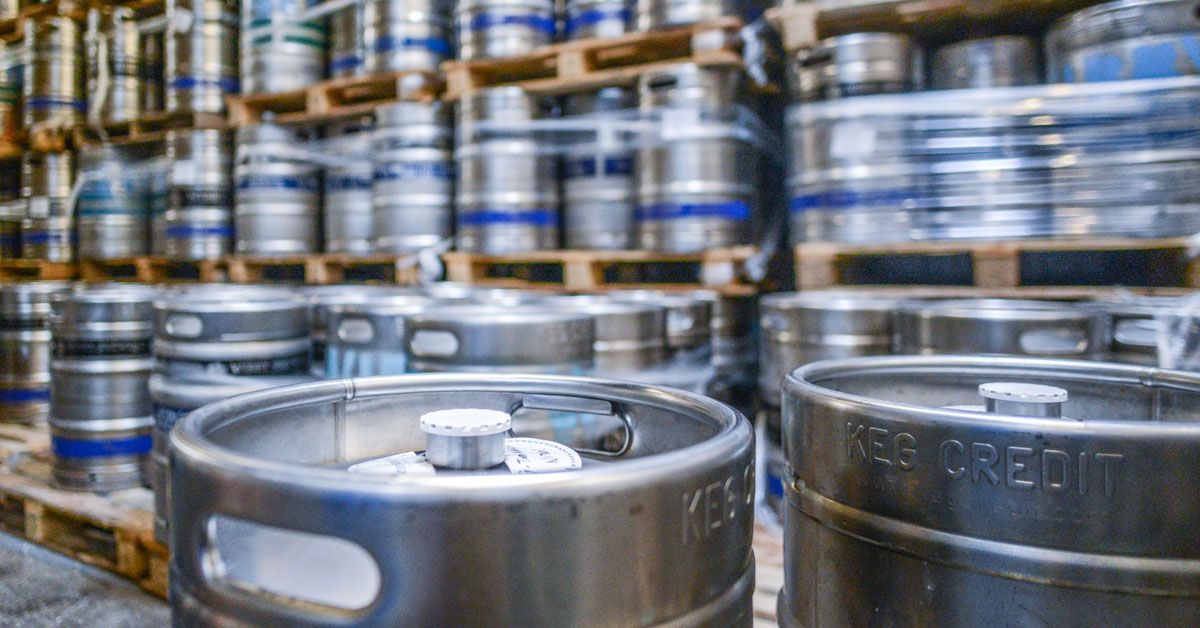Kegs are a ubiquitous and essential vehicle for getting craft beer to the consumer with about 35-40% of total volume sales coming from draught in 2022. Therefore, it is important for brewers to package into kegs that will stand up to the rigors of the trade, and protect the quality of product and the safety of brewery employees, distributors, retailers, and consumers who may be exposed to kegs at festivals or at home for personal use and events. The aggregated playlist of resources below will help breweries ensure keg safety and draught quality are met within their facilities and in the market.
Keg Guidelines
- Justification: Learn the background behind the Brewers Association’s (BA) keg guidelines through the Keg Performance Guidelines seminar presented by Bilfinger Industrial Services (BIS).
- Utilize: The BA and BIS created best practice guidelines for procurement, performance, and use of refillable kegs and single use kegs, and are the foundations of keg quality and safety.
Keg Maintenance
Keg maintenance and inspection should be included in brewery preventative maintenance schedules. Furthermore, the maintenance must be done correctly and in a safe manner to avoid risking potentially dangerous situations.
- Watch: In this 2020 Craft Brewers Conference (CBC) seminar, A Practical Approach to Refillable Kegs – Quality, Safety, and Maintenance, Steve Bradt details what keg damage looks like and discusses key keg maintenance points, among other keg and draught concepts.
- Fortify: Continue to develop knowledge on proper safe keg and valve maintenance, along with tips on machine maintenance to help prolong the life of equipment with this Keg and Valve Maintenance and Repair CBC seminar.
Good Manners and Kegs
The use of kegs involves multiple parties throughout the supply chain, not just breweries. To keep the system running smoothly, everyone in the keg supply chain must play their part respectfully. For example, breweries must understand that keg deposits don’t represent ownership, and how detrimental keg loss can be to breweries.
- Review: The Keg Etiquette resource reviews the interconnectedness of the keg supply chain in concise language, and demonstrates how, when keg etiquette is not followed, the craft industry is harmed.
- Adhere: When all keg supply chain parties—from brewers, to wholesalers and retailers, to consumers, follow the Best Practices for Keg Users—everyone wins.
- Bottom Line: Andy Sparhawk explains why and how keg theft hurts our industry in his article, Steel, Not Steal: Keg Loss Continues to Be an Industry Problem.
- Denounce: The BA and the Institute of Scrap Recycling Industries issued a joint statement denouncing the practice of Keg Scrapping.
Draught Beer Quality and Safety
We cannot discuss kegs without considering what should come out of them: safe and as-the-brewer-intended fresh draught beer.
- Read: The Draught Beer Quality Manual is the ultimate resource for draught installers, wholesalers, retailers, and brewers.
- Preserve: Retailers play a critical role in preserving the great flavor and aroma in beer and should read the Draught Beer Quality for Retailers.
- Learn: Often overlooked, draught line cleaning poses inherent safety risks for those working around the procedure. Enroll in the free self-paced Draught Line Safety for Adjacent Workers course and learn how to control and mitigate risks associated with draught cleaning procedures.




